- Home
- About WVN
-
WVN Issues
- Vol. 1 No. 1 (Oct. 2017) >
- Vol. 2 No. 1 (Feb. 2018) >
- Vol. 2 No. 2 (Jun. 2018) >
- Vol. 2 No. 3 (Oct. 2018) >
- Vol. 3 No. 1 (Feb. 2019) >
- Vol. 3 No. 2 (Jun. 2019) >
- Vol. 3 No. 3 (Oct. 2019) >
- Vol. 4 No. 1 (Feb. 2020) >
- Vol. 4 No. 2 (Jun. 2020) >
- Vol. 4 No. 3 (Oct. 2020) >
- Vol. 5 No. 1 (Feb. 2021) >
- Vol. 5 No. 2 (Jun. 2021) >
- Vol. 5 No. 3 (Oct. 2021) >
- Vol. 6 No. 1 (Feb. 2022) >
- Vol. 6 No. 2 (Jun. 2022) >
- Vol. 6 No. 3 (Oct. 2022) >
- Vol. 7 No. 1 (Feb. 2023) >
- Vol. 7 No. 2 (Jun. 2023) >
- Vol. 7 No. 3 (Oct. 2023) >
- Vol. 8 No. 1 (Feb. 2024) >
-
Events
- CIES 2023, Feb. 14-22, Washington D.C., USA
- ICES 4th National Conference, Tel Aviv University, Israel, 20 June 2021
- 2022 Virtual Conference of CESHK, 18-19 March 2022
- ISCEST Nigeria 7th Annual International Conference, 30 Nov.-3 Dec. 2020
- 3rd WCCES Symposium (Virtually through Zoom) 25-27 Nov. 2020
- CESA 12th Biennial Conference, Kathmandu, Nepal, 26-28 Sept. 2020
- CESI 10th International Conference, New Delhi, India, 9-11 Dec. 2019
- SOMEC Forum, Mexico City, 13 Nov. 2018
- WCCES Symposium, Geneva, 14-15 Jan. 2019
- 54th EC Meeting, Geneva, Switzerland, 14 Jan. 2019
- XVII World Congress of Comparative Education Societies, Cancún, Mexico, 20-24 May 2019
- ISCEST Nigeria 5th Annual Conference, 3-6 Dec. 2018
- CESI 9th International Conference, Vadodara, India, 14-16 Dec. 2018
- ICES 3rd National Conference, Ben-Gurion University, Israel, 17 Jan. 2019
- WCCES Retreat & EC Meeting, Johannesburg, 20-21 June 2018
- WCCES Symposium, Johannesburg, 21-22 June 2018
- 5th IOCES International Conference, 21-22 June 2018
- International Research Symposium, Sonepat, India, 11-12 Dec. 2017
- WCCES Info Session & Launch of Online Course on Practicing Nonviolence at CIES, 29 March 2018
- WCCES Leadership Meeting at CIES, 28 March 2018
- 52nd EC Meeting of WCCES, France, 10-11 Oct. 2017
- UIA Round Table Asia Pacific, Chiang Mai, Thailand, 21-22 Sept. 2017
- Online Courses
Comparing International and National Science Curricula to create a New Science World Curriculum4/30/2021 Introduction and literature review Science is both a body of knowledge that represents current understanding of natural systems and the process whereby that body of knowledge has been established and is being continually extended, refined, and revised (NRC, 2007). Both elements are essential in learning and teaching at school level. The Next Generation Science Standards (2013) strongly emphasizes an integrated approach to science teaching and learning across three dimensions: Science and Engineering Practices, Disciplinary Core Ideas, and Crosscutting Ideas. Studying the history of science allows learners to have a glimpse into both the history of the world and into just how we discovered everything we know about the world. Nature of Science (NOS) means, the characteristics of scientific knowledge as derived from how it is produced, has long been recognized as a critical component of scientific literacy. At elementary school level it is necessary knowledge for students to make informed decisions with respect to the ever-increasing scientifically-based personal and societal issues. NOS is best understood by students if it is explicitly addressed within the context of students’ learning of science and engineering practices, disciplinary core ideas, and crosscutting concepts. According to National Science Teaching Association’s position statement (2000), NOS is a critical component of scientific literacy that enhances students’ understandings of science concepts and enables them to make informed decisions about scientifically-based personal and societal issues. NOS is derived not only from the eight science practices delineated in the Framework for K–12 Science Education (National Research Council, 2012), but also from decades of research supporting the various forms of systematic gathering of information through direct and indirect observations of the natural world and the testing of this information by the various research methods used in science, such as descriptive, correlational, and experimental designs. Understanding of NOS is a critical component of scientific literacy. It enhances students’ understandings of science concepts and enables them to make informed decisions about scientifically based personal and societal issues. The National Science Teachers Association (1982) endorses the proposition that science, along with its methods, explanations, and generalizations, must be the sole focus of instruction in science classes to the exclusion of all nonscientific or pseudoscientific methods, explanations, generalizations, and products. According to National Science Teachers Association (2018) school students should understand the following concepts related to the nature of science:
Need for a new world curriculum The future of jobs and the competencies required for them is increasingly becoming unpredictable given the uncertainty prevailing due to the COVID-19 pandemic that swamped the world since early 2020. Even before the pandemic, it was recognized that it is difficult to predict about the kind of jobs that will be available in a decade from now. Therefore, the children today need to be prepared to be versatile and adaptable to the new realities of the world in the coming future. Accordingly, the importance of integrating STEM (Science, technology, engineering and maths) into world education where science has to play a vital role, is well recognised. When teaching and learning science, it is imperative to emphasize three main components: content, process and scientific attitudes. However, for centuries, the memorization of concepts and testing the memory of children to cram everything in the mind through invigilated examinations has been the prime learning outcome. Therefore, during the past few decades, science curricula of many countries have been redesigned to match the new trends in world scenario such as technological revolution and globalization. Technology has drastically modified this requirement of memorization in practical terms by way of advent of the Internet and economically priced computers that allow human being to easily store and retrieve information as and when required. In almost all practical scenarios, professionals are expected to have analytical skills to be able to process this readily available information for useful purposes. Therefore, learning outcomes of contemporary curricula need to be formulated suitably such that their learning outcomes are aligned to this new pragmatic reality. The Indian Ocean Comparative Education Society (IOCES) embarked upon creating a world curriculum during mid-2020 on the basis of the future competencies and the future of curriculum outlined by the UNESCO International Bureau of Education, Geneva, Switzerland (Marope, Griffin and Gallagher, 2017). The following learning outcomes form the foundation of the IOCES world curriculum: P1. Develop lifelong learning skills through curiosity, creativity and critical thinking P2. Demonstrate self-agency including initiative, drive, motivation, endurance, grit, resilience and responsibility P3. Apply diverse tools and resources in an impactful, efficient and responsible way P4. Relate with others locally as well as globally in the spirit of collaboration, mutual respect, empathy, collegiality, peace and harmony Learning outcomes of the new science world curriculum Science is an integral part of middle school/ secondary education in all national and international curricula. The aims of science curriculum are to help children develop basic scientific ideas and understanding about the biological and physical aspects of the world, and the processes through which they develop this knowledge and understanding. The curriculum also aims to foster positive attitudes toward science, and to encourage children to examine and appreciate how science and technology affect their lives and the environment. The IOCES world curriculum, therefore, created the below learning outcomes for its science world curriculum in line with the overall program outcomes stated above: LO1. Appreciate how key concepts and principles of science helped in enriching human life LO2. Explore the application of science in new ways to benefit society locally as well as globally LO3. Demonstrate efficient and responsible use of natural resources through scientific methods Comparing various national and international science curricula In order to create a new world curriculum of science, IOCES considered the following five national and international science curricula of grades 6, 7 and 8 for comparative content analysis: 1.Cambridge Assessment International Education (CAIE), United Kingdom 2.The National Council of Educational Research and Training (NCERT), India 3.Ministry of Education, Government of Pakistan 4.Educational Publications Department, Government of Sri Lanka 5.National Curriculum and Textbook Board, Bangladesh Methodology Content analysis methodology was employed by considering the curricula topics and sub-topics in the textbooks available online. Content analysis is a research technique used to make replicable and valid inferences by interpreting and coding textual material. By systematically evaluating texts (e.g., documents, oral communication, and graphics), qualitative data can be converted into quantitative data. Microsoft Excel sheet was used to place similar topics of various curricula for grades 6, 7 and 8 in the cells side-by-side to facilitate easy comparison. Color coding was used to easily identify the various curricula for these grades. Fig. 1 Comparing science curricula for grades 6, 7 and 8 Unique aspects of various curricula NCERT, India The NCERT science curriculum gives a good start with topics like “Food: Where does it come from” (Grade 6), “Nutrition in plants” (Grade 7), and “Crop production and management” keeping in focus the largely agrarian economy of India. Certain themes expand across the three grades, for example, “Fiber to fabric” is dealt with adeptly in grades 6 and 7, and then escalates into grade 8 as “Synthetic fibers and plastics”. Likewise, “Electricity and circuits” (Grade 6), “Electric current and its effects” (Grade 7), and “Chemical effects of electric current” (Grade 8) transition across the three grades. A similar strand cutting across the three grades is “Water” (Grade 6), “Water: A precious resource” (Grade 7) and “Wastewater story” (Grade 8). Here, the emphasis is on developing skills of scientific inquiry; to design and carry out scientific investigations and evaluate scientific evidence to draw conclusions. The uniqueness of this science learning is to train learners to communicate scientific ideas, arguments, and practical experiences accurately in a variety of ways. NIE, Sri Lanka According to the National Institute of Education (NIE) the subject of science directs the student towards a more active learning process in a manner as to develop knowledge, skills and attitudes needed for a developmental scientific thought. The subject content is largely arranged based on experiences of daily life and it has contributed to prove the fact that the subject of science is very much closer to the day to day life. The objectives of Sri Lankan junior secondary level science curriculum are defined on 4 main competence and the textbooks were updated while focusing on activity-based learning to encourage student’s active participation NCTB, Bangladesh The objectives stated by NCTB are to flourish the knowledge of natural phenomena by increasing observation power of learner so that they can earn the capacity to solve the various problems. The focus is on learning by doing to develop positive attitude and skills. There is scope to flourish the talent, creativeness, imagination and inquisitiveness of the learners. NCF2006, Pakistan According to NCF2006, the uniqueness of the curriculum is the promotion of an inquiry-based approach, student-centered, and outcomes-focus. The science education considered as a key element in developing scientific literacy and in building a strong future for young generation. CAIE, United Kingdom The Cambridge Assessment International Education (CAIE) curriculum has several unique topics in its science curriculum. For instance, variation and classification (Grade 6) is not found in any other curriculum considered in this study. The textbooks are authored by including several hands-on activities as assignments for students. IOCES Science World Curriculum Figure 2 shows the IOCES proposed world science curriculum. The color coding was used to show the common themes of topics across grades 6, 7 and 8. Schools offering the curriculum in online mode may allow the learners to “fast-track” their learning by reading these related topics across grades 6, 7 and 8 in one go, rather than the conventional way of waiting for one full year to reach the next grade level to undertake these topics. This flexibility will help the learners to learn at their own pace. It is likely that some learners may finish their 6, 7 and 8 grades in less than 3 years normally taken in the conventional mode of teaching and learning. The topic “Plants” is introduced at Grade 6 & 7, and topic “Agriculture” at Grade 8. Here the focus of these topics is on understanding structure-function relation and various life processes that happen in the plants. The idea here it to make the learners understand how the basic life processes of plants eventually lead to nurture and sustain the large human population of Earth through agriculture. It implicitly accentuates the importance that farming and farmers have throughout the lives of each human being in the world. Every such theme in the IOCES Science world curriculum is aligned closely with the learning outcome 1 (LO1): Appreciate how key concepts and principles of science helped in enriching human life Latest technology used in agriculture is expected to be incorporated in the content development to meet the learning outcome 2 (LO2): Explore the application of science in new ways to benefit society locally as well as globally. Similar patterns are used for topics related to Human Body (grade 6 & &) and Food & Nutrition (Grade 8). The fundamental understanding of the various parts and processes in the human body, thus lead to the pragmatic approach of how to improve nutrition for a healthy life. The next theme is constituted by The Cell (Grade 6), The Living World (Grade 7) & The Living Ecosystem (Grade 8). In this stream of topics, the evolution of life on Earth through the smallest of micro-organisms is explained in order to drive home the lesson about natural diversity and ecological balance through food chains, webs, and energy flows. The learners would appreciate how each living organism is directly or indirectly dependent on the other to support life processes. Structure of matter (Grade 6) , State of matter (Grade 7) & Material changes (Grade 8) allows the learner to know about the smallest of atomic particles, how matter changes into any of the three states of solids, liquids and gases, and also through physical and chemical reactions. This understanding helps them in looking at the practical implications and uses in daily lives, for example, conversion of water into ice in refrigerators, especially useful during the summers. Soil (Grade 6), Air & water (Grade 7), Pollution (Grade 8) is a theme culled out from the similarities in various curricula considered in the mapping. The basic elements of soil, air and water that are necessary for all life forms, must be preserved. Humans are primarily responsible for polluting these fundamental elements through their activities of exploiting the natural environment. As a result, soil in many regions of the world is increasingly becoming infertile, air is unbreathable and natural water bodies are drying up due to continued pollution. All this must change, if our future generations have to survive. Thus, this theme ends in the topic on pollution in grade 8, which suggests measures to preserve our natural resources in all forms. Thus, this them suitably addresses the learning outcome 3 (LO3): Demonstrate efficient and responsible use of natural resources through scientific methods. Another area of commonality across the three grades is The Earth (Grade 6), The Solar System and beyond (Grade 7), Space exploration and artificial satellites (Grade 8). A major achievement of modern science is landing humans on the moon in the 20th century. This remarkable feat has been followed up by more recent missions on Mars. However, the most impactful discovery that positively transformed human lives across the globe is the advent of artificial satellites. Therefore, this theme of topics provides the opportunity to the learners to appreciate the uniqueness of the Earth, its place in the Solar System, and how humans continue to explore the universe to find traces of life elsewhere. Motion & Force (Grade 6), Force & friction (Grade 7), Pressure (Grade 8) is the strand of topics that makes the learners understand the basics of force and its application in equipment like hammer, lever, pulley, axis and wheel. Subsequently, the role of gravitational forces and experiences like weightlessness in the space are covered. The topic on pressure dwells into atmospheric pressure with application in topics like “aerosols” relevant to the current COVID-19 pandemic ravaging the world. It is also explained how atmospheric pressure plays a role in transforming the normal winds into storms and cyclones. The strand of Light (Grade 6 & 7) and Sound (Grade 8) covers the fundamental principles of light and its reflection from the mirrors. The formation of shadows is explained as a practical application of reflection. The listening of sounds by the human ear is covered before dwelling into the phenomenon of echo. Electricity (Grade 6 & 7), Magnetism (Grade 8) is the last strand of topics in the world curriculum. It covers the innovation of electricity and the electric bulb, which transformed the human life phenomenally. It then touches upon topics like electroplating that have several practical applications. Similarly, the fundamentals of magnetism lead to the sub-topic of geomagnetism, which allows the learners to be aware of the Earth containing the world’s biggest magnet in its core. Lastly, the topic elaborates on the concept of electromagnetism and its extensive application in scrapyards. In this curriculum focus is given on agrarian economy, space science, food & health, environment, and physical sciences. Certain themes expand across the three grades and certain escalate into grade 8. There are certain concepts which are strand cutting across the three grades such as “Water”. The IOCES Science World Curriculum has given the emphasis on developing skills of scientific inquiry; to design and carry out scientific investigations and evaluate scientific evidence to draw conclusions. The approach adapted in designing the world curriculum is to include topics so as to arouse curiosity in the young minds rather than trying to include everything available. Likewise, the expectation in content development by the partner schools using this world curriculum is also to remain succinct and apprise the learners of the key concepts in science. More importantly, it is expected that the learners will be exposed to continuous online assessments to ascertain if they read the content properly. These assessments will do away with the invigilated closed-book examinations. Instead, they will serve as learning reinforcements – allowing the learners to repeatedly take the same quiz till they get all the answers correct. The real-time feedback possible through technology today, will allow the learners to know promptly why a particular option chosen by them is incorrect and why another option is correct. Fig. 2 Science world curriculum
Conclusions Based on the future competencies and the future of curriculum outlined by the UNESCO International Bureau of Education, Geneva, Switzerland, IOCES has prepared a science world curriculum for the 21st century. The learning outcomes in this world curriculum have been aligned to new pragmatic realities. The use of content analysis methodology helped in identifying the similarities and differences in the 5 national and international curricula considered in this study. References: Marope, M., Griffin, P. and Gallagher, C. (2017) Future Competencies and the Future of Curriculum: A Global Reference for Curricula Transformation, UNESCO IBE: Geneva, Switzerland. National Research Council (2007). Taking Science to School: Learning and Teaching Science in Grades K-8. Washington, DC: The National Academies Press. National Research Council (2012). A framework for K–12 science education: Practices, crosscutting concepts, and core ideas. Washington, DC: National Academies Press. National Science Teachers Association (1982). Science-technology-society: Science education for the 1980s. Washington, DC: Author. National Science Teachers Association (2018). Transitioning from scientific inquiry to three-dimensional teaching and learning. Arlington, VA: Author. National Science Teachers Association (2000). The nature of science: NSTA Position Statement. Arlington, VA: Author. Next Generation Science Standards Lead States (2013). Next generation science standards: For states, by states. Washington, DC: National Academies Press
0 Comments
Leave a Reply. |
AuthorsDr. Kanishka Bedi Dr. Narendra D. Deshmukh
Scientific Officer-E Homi Bhabha Centre for Science Education Tata Institute of Fundamental Research Mumbai, India & Chair, World Curriculum Standing Committee Indian Ocean Comparative Education Society (IOCES) Dr. (Mrs) T.M.S.S.K. Yatigammana Ekanayake
Vice President Indian Ocean Comparative Education Society (IOCES) & Lecturer Department of Education University of Peradeniya Sri Lanka Dr. (Ms) P.R.K.A. Vitharana, Treasurer
Indian Ocean Comparative Education Society (IOCES) & Head Department of Education University of Peradeniya Sri Lanka ArchivesCategories Bangalore City Central Library Image Attribution: Purshi, CC BY-SA 3.0 <https://creativecommons.org/licenses/by-sa/3.0>, via Wikimedia Commons |
- Home
- About WVN
-
WVN Issues
- Vol. 1 No. 1 (Oct. 2017) >
- Vol. 2 No. 1 (Feb. 2018) >
- Vol. 2 No. 2 (Jun. 2018) >
- Vol. 2 No. 3 (Oct. 2018) >
- Vol. 3 No. 1 (Feb. 2019) >
- Vol. 3 No. 2 (Jun. 2019) >
- Vol. 3 No. 3 (Oct. 2019) >
- Vol. 4 No. 1 (Feb. 2020) >
- Vol. 4 No. 2 (Jun. 2020) >
- Vol. 4 No. 3 (Oct. 2020) >
- Vol. 5 No. 1 (Feb. 2021) >
- Vol. 5 No. 2 (Jun. 2021) >
- Vol. 5 No. 3 (Oct. 2021) >
- Vol. 6 No. 1 (Feb. 2022) >
- Vol. 6 No. 2 (Jun. 2022) >
- Vol. 6 No. 3 (Oct. 2022) >
- Vol. 7 No. 1 (Feb. 2023) >
- Vol. 7 No. 2 (Jun. 2023) >
- Vol. 7 No. 3 (Oct. 2023) >
- Vol. 8 No. 1 (Feb. 2024) >
-
Events
- CIES 2023, Feb. 14-22, Washington D.C., USA
- ICES 4th National Conference, Tel Aviv University, Israel, 20 June 2021
- 2022 Virtual Conference of CESHK, 18-19 March 2022
- ISCEST Nigeria 7th Annual International Conference, 30 Nov.-3 Dec. 2020
- 3rd WCCES Symposium (Virtually through Zoom) 25-27 Nov. 2020
- CESA 12th Biennial Conference, Kathmandu, Nepal, 26-28 Sept. 2020
- CESI 10th International Conference, New Delhi, India, 9-11 Dec. 2019
- SOMEC Forum, Mexico City, 13 Nov. 2018
- WCCES Symposium, Geneva, 14-15 Jan. 2019
- 54th EC Meeting, Geneva, Switzerland, 14 Jan. 2019
- XVII World Congress of Comparative Education Societies, Cancún, Mexico, 20-24 May 2019
- ISCEST Nigeria 5th Annual Conference, 3-6 Dec. 2018
- CESI 9th International Conference, Vadodara, India, 14-16 Dec. 2018
- ICES 3rd National Conference, Ben-Gurion University, Israel, 17 Jan. 2019
- WCCES Retreat & EC Meeting, Johannesburg, 20-21 June 2018
- WCCES Symposium, Johannesburg, 21-22 June 2018
- 5th IOCES International Conference, 21-22 June 2018
- International Research Symposium, Sonepat, India, 11-12 Dec. 2017
- WCCES Info Session & Launch of Online Course on Practicing Nonviolence at CIES, 29 March 2018
- WCCES Leadership Meeting at CIES, 28 March 2018
- 52nd EC Meeting of WCCES, France, 10-11 Oct. 2017
- UIA Round Table Asia Pacific, Chiang Mai, Thailand, 21-22 Sept. 2017
- Online Courses
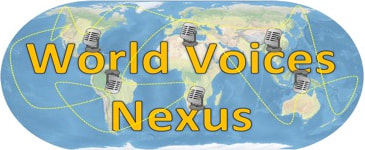
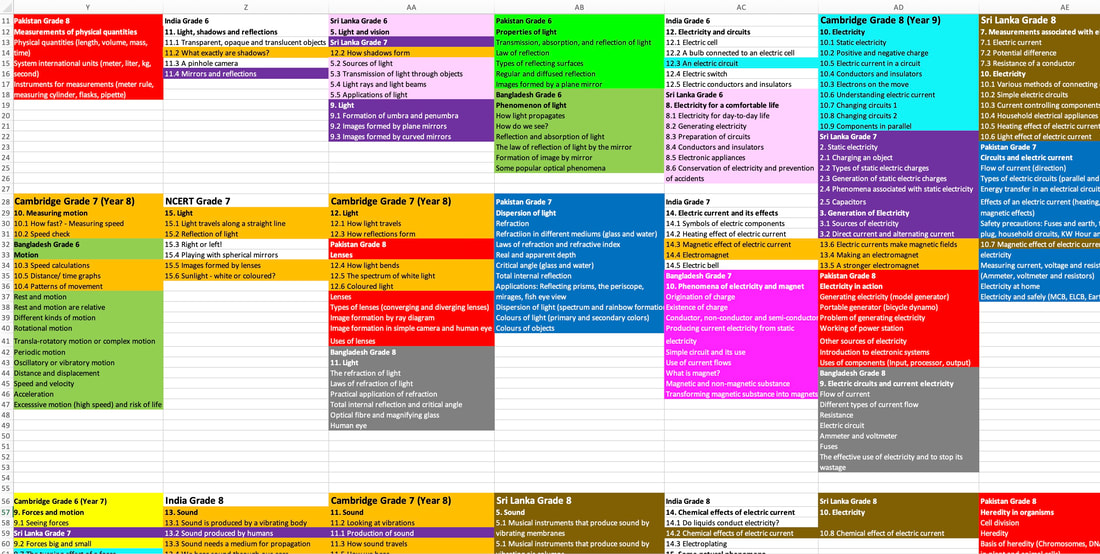
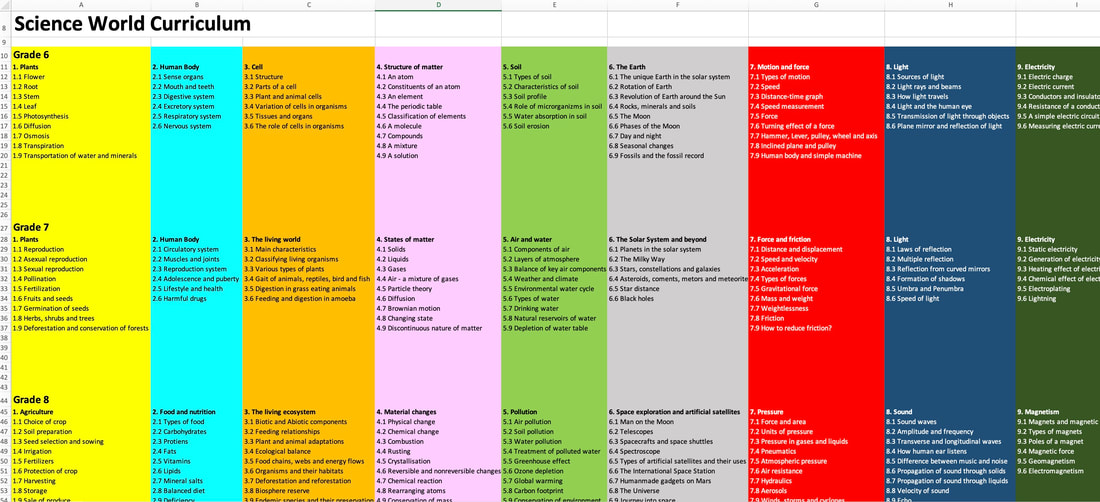
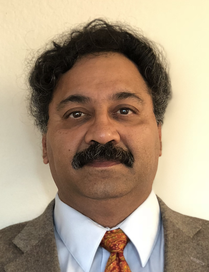
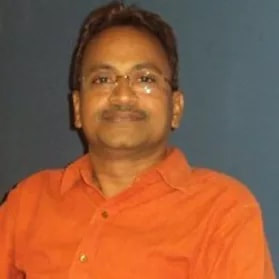
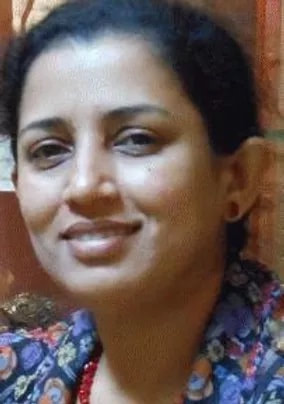
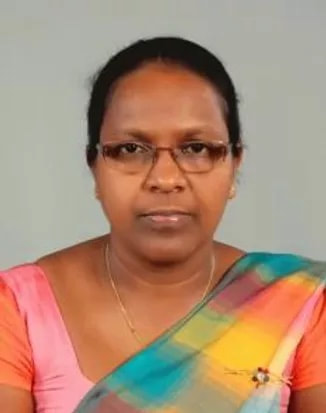
 RSS Feed
RSS Feed
